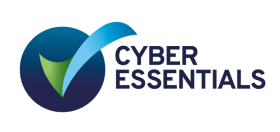In the building and construction products industry, accurate, up-to-date product information is essential. Whether you're managing a complex specification library, updating technical documentation, or syndicating data across sales and distribution channels, your content management system (CMS) and product information management (PIM) platform need to keep pace. But what happens when they don’t?
Here are five clear signs your CMS or PIM may be holding you back – and what to do about it.
1. You’re duplicating effort across teams and systems
If your marketing, sales, technical, and compliance teams are all managing versions of the same product information in different places, it’s a red flag. Manual updates increase the risk of inconsistencies and eat into valuable time. A fit-for-purpose PIM should provide a single source of truth, enabling content reuse across multiple channels without duplication.
2. You’re struggling to meet customer expectations for digital experience
B2B buyers today expect the same clarity and ease of navigation they get from consumer websites. If your CMS can’t support rich product content, dynamic filtering, or user-friendly navigation, you’re likely losing engagement. The right CMS should support flexible templates and be easy for non-technical teams to update, so you can respond quickly to evolving customer needs.
3. Your product data can’t easily be syndicated
If you're working with platforms like NBS, BIM libraries, merchant portals, or third-party marketplaces, your data needs to move cleanly and consistently between systems. Legacy PIM platforms often lack modern APIs or structured data outputs, creating bottlenecks. A modern PIM should be built for integration and data governance – not just storage.
4. You can’t scale without complexity increasing
When launching new product ranges, entering new regions, or onboarding new partners becomes a slow and manual process, your systems are likely creating friction. Scalable platforms allow you to expand without needing to rebuild or duplicate structures. This includes support for multilingual content, regional compliance data, and tailored partner outputs.
5. Your teams rely on workarounds
Spreadsheets. Manual copy-paste jobs. Exporting and re-uploading product data. If any of this sounds familiar, it's a sign your CMS or PIM is falling short. These workarounds often introduce errors, reduce agility, and make it harder to maintain governance. The longer they continue, the higher the long-term risk to your brand and operational efficiency.
What’s next?
If any of these signs ring true, it may be time to assess whether your current CMS or PIM setup still supports your business goals. That doesn’t always mean a total rebuild – but it does mean taking a strategic look at how your systems serve (or constrain) your teams and customers.
We help building and construction product businesses select, implement, and optimise CMS and PIM platforms that are built for the realities of today’s digital landscape. If you're thinking about upgrading, we’d love to help you de-risk the process. Talk to us today to discuss how we can help you improve your digital estate.
Get more of this by subscribing to our regular newsletter





